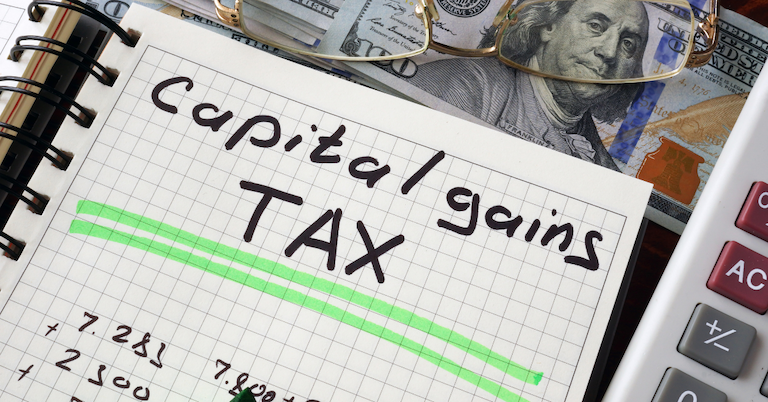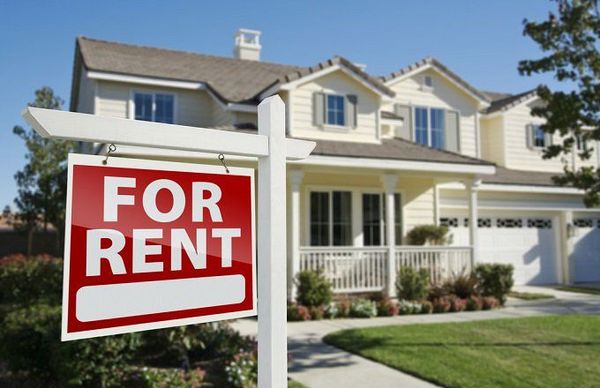From passive income and appreciation to diversification and security, investing in real estate has its perks. Sadly, capital gains taxes on investment properties is not one of them.
With the right rental property, you can easily enjoy a steady stream of passive income that more than covers the mortgage and other other expenses you may have.
However, all good things come at a cost. That’s where the IRS comes in. Part of owning an investment property involves paying taxes on the profit you've earned. This is especially important to understand when you are getting ready to sell your property.
As a beginner investor, you are likely wondering how these capital gains taxes on investment properties work. Let’s find out!
What are Capital Gains Taxes?
A capital gains tax is a tax that must be paid on the profit you earn for selling any asset that appreciates in value. The amount of capital gains taxes you must pay varies depending on the profits earned, your filing status, and the length of time in which you owned the property.
Capital gains tax can apply to any asset that increases in value - for example stocks or equities are the most common, but real estate is a big category as well. When it comes to capital gains taxes, there are two types - short-term and long-term.
Short-Term Capital Gains Taxes
Short-term capital gains taxes are those that occur when you sell an investment property that you have owned for a year or less. These gains are taxed as normal income which means you would pay the same tax rate as you would on wages from your job. Short-term capital gains taxes are most often seen on flipped properties since investors can get in and out of those investments quickly.
Long-Term Capital Gains Taxes
Investors who hold onto an investment property for longer than a year can take advantage of long-term capital gains taxes. These gains are generally taxed at a lower rate of 15%, or 20%. Of course, the percentage will depend on your income and your filing status. If you own rental property as an investment year over year, you will most likely deal with the long-term capital gains taxes.
Ways to Reduce or Avoid Capital Gains Taxes
As an investor, you want to make a profit off of your investment property. Unfortunately, capital gains taxes can take out a huge chunk of those profits. Luckily there are ways that investors can reduce these taxes, or even avoid them all together.
Make Your Investment Your Primary Property
One of the easiest ways to reduce capital gains tax is to turn your investment property into your primary residence. IRS Section 121 allows taxpayers to exclude $250,000 of capital gains as a single filer ($500,000 if married or filing jointly).
To qualify for the exception, you must own and live in the property as your primary residence for at least two of the five years preceding the sale. This method works best for investors who are not in a rush to sell.
Offset Gains With Losses
Offsetting your gains and losses is another common way to reduce capital gains taxes. This strategy, often referred to as tax-loss harvesting, involves reducing your tax liability when selling an investment property by pairing the gains from the sale with the loss of another investment.
This tax break can be an effective tax planning strategy if the investor is holding onto another investment that has lost value. While this tax-reducing method has traditionally been used to offset gains from stock investment, more and more people have been applying it to investment property sales.
Take Advantage of Section 1031 of the Tax Code
Using Section 1031 of the tax code, investors can actually defer paying capital gains taxes by doing a like-kind exchange. This means that an investor can sell an investment property while purchasing a “like-kind” property, and defer paying taxes until after the exchange. However, the term “like-kind” is rather broadly defined and strict limits do apply.
In order to qualify for this exchange, the property being sold must have been used for trade in business or investment. This means personal residences and vacation homes do not apply. Other than that, if both investment properties in question are generating income, they're fair game for the Section 1031 exchange.
Do note that timing is everything with this method. From the date of sale, investors have 45 days to identify up to three like-kind properties. These like-kind properties must be formally closed on within 180 days or else the investor will pay the full capital gains taxes on the original property.
Calculating Capital Gains Taxes For a Rental Property Sale
Nowadays, we have tools for everything—including taxes! Thanks to technology, you can now go online and find the right tax calculator with just the click of a button. Granted, while it is easy to find and access these tools, the actual process of calculating capital gains taxes on investment properties isn’t as simple as just subtracting what you originally paid from what you sold the property for. To calculate the capital gain, you want to subtract the “cost basis” of the property from the “net proceeds” you make from the sale of the property.
The “cost basis” differs from just the cost of the property in that other factors are considered. Not only does it include the amount you paid for the property, but it also includes costs related to the purchase (appraisal fees, legal fees, etc.) and the cost of any improvements that have been made to the property since you purchased it.
These improvements must add value to the home in order for them to be considered. This includes things like a new roof, a new addition to the property, or a room remodel. Any regular maintenance or simply cosmetic changes (such as painting bedrooms) would not count as an improvement to the home when calculating cost basis.
When you sell an investment property, you don’t really receive the full sales price. There are several costs associated with selling a property such as real estate agent commission, home staging, cleaning fees, and several legal fees. “Net proceeds” refer to the profit you make after deducting these associated costs from the sale price.
Once you have both these two numbers, subtract the cost basis from the net proceeds. If the number you reach is negative then it is a loss. If the number you reach is negative, it's a loss. If positive, it’s a gain.
Conclusion
Capital gains taxes on investment properties can easily take a big chunk out of your profits when you are looking to sell your property. Luckily, understanding how these gains taxes work and knowing the methods to reduce them can certainly help. Because tax rules are complex and real estate is constantly changing, it is always recommended to work with a tax advisor and a real estate agent.
At SimpleShowing, our expert agents will help you sell your property, as well as connect you with other professionals that will make your sale easier. Even if you can't reduce your capital gain taxes, you'll always be able to reduce costs on the sale of your property with SimpleShowings low 1% lising fee! Find out how by contacting us today.






